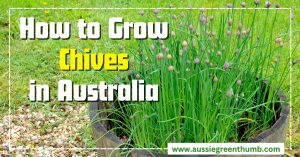Sansevieria trifasciata ‘Moonshine’ is a quirky plant which is easily grown indoors and outdoors. This common garden plant is relatively easy to grow and even easier to care for.
Whether in a pot, hanging basket or plant stand, you’ll love growing lots of these drought-tolerant plants. Follow our grow and care guide to make sure you can effortlessly, plant, propagate and look after plenty of pretty Sansevieria ‘Moonshine’.
More...
Growing Sansevieria ‘Moonshine’ in Your Home or Office
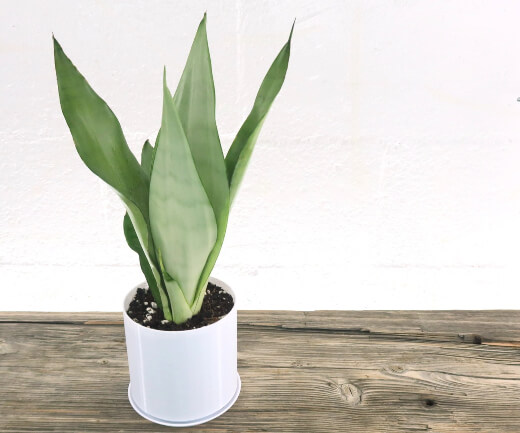
Source: prettyingreen.com
Did you know that the Sansevieria species is actually known to have remarkable air-purifying properties? The moonshine snake plant has been proven to filter a variety of air-borne toxins like formaldehyde, toluene and nitrogen. Another reason it’s ideal for indoors.
More so, through it’s remarkable photosynthesis processes and Crassulacean Acid Metabolism (CAM), sansevieria plants expel oxygen even at night.
So, if you’re someone who struggles with allergies, consider growing some sansevieria in your bedroom. Some eastern cultures even believe that the moonshine snake plant can improve the Feng-Shuai within your home.
It is believed that when placed in Eastern, Southern and South Eastern facing positions in your home, the moonshine snake plant can help spell out negative energies.
Whether you’re planning on planting in your home or office, the moonshine plant grows vertically, meaning you easily pop this pretty little cultivar into a variety of pot types. Plus, vertical growth means it’s super space conscious.
When choosing the perfect spot, consider an area which receives some direct sunlight or a spot which is semi-shaded. Although it prefers warmer conditions, sansevieria can continue to grow in temperature conditions as low as 0°C.
Most importantly, when growing Sansevieria ‘Moonshine’, ensure you’ve used a succulent or well-draining soil mix to keep your roots happy and avoid waterlogging.
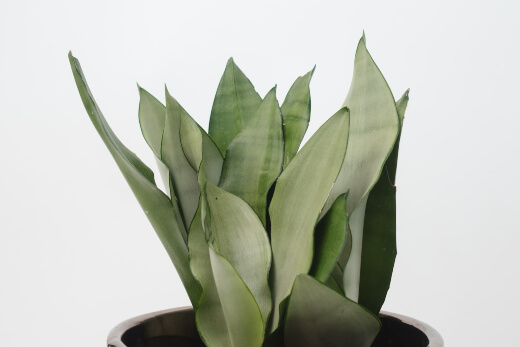
Source: plantshopseattle.com
Is Sansevieria ‘Moonshine’ Rare?
Although native to West Africa, Nigeria and the Congo specifically, Sansevieria ‘Moonshine’ or ‘mother-in-law-tongue’ plant are now grown across the world.
This cultivar forms part of the asparagaceae family. Although this cultivar prefers warmer conditions, this curious plant can quickly adapt to low light conditions, which makes an ideal indoor plant.
Plus, with a rapid grow rate and fairly simple prorogation, you can have plenty of little baby moonshine snake plants all around your home or garden.
Other Sansevierias that are ideal for home gardening include:
- Sansevieria ‘Craigii’
- Sansevieria ‘Superba’
- Sansevieria jacquinii
Sansevieria ‘Moonshine’ Propagation
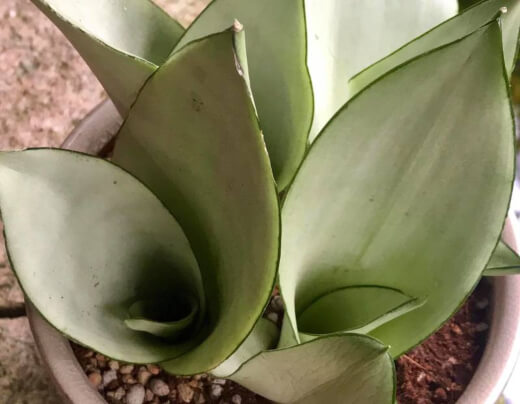
Source: davesgarden.com
The moonshine snake plant is one of the easiest propagated indoor plants around. With a fast-growing rhizome structure, baby snake plants are very quickly grown.
Propagating Sansevieria ‘Moonshine’ from a Cutting
Taking a cutting from an existing plant is a simple, step by step process and can be done over and over, providing you have a healthy moonshine plant to make cuttings from.
- Step 1 – Take a sharp blade and remove a leaf cutting approximately 5cm in length.
- Step 2 – Allow the edge which was cut to dry fully, then, plant vertically into seeding mix, ensuring at least half of the cutting is in the soil.
- Step 3 – Ensure the soil around the cutting remains moist throughout rooting. Root fibres will begin to grow after 3 to 4 weeks.
Moonshine Snake Plant Propagation in Water
Propagating in water is another great way to grow baby snake plants. Again you will need to ensure you take your cutting from a healthy, existing snake plant.
- Step 1 – Use a sharp blade to remove a medium sized healthy leaf.
- Step 2 – Allow the edge which was cut to dry fully and begin to callous. Once calloused, place your leaf cutting into a glass of water which is halfway full.
- Step 3 – Exchange your water every couple of days while rooting. After about 4 to 5 weeks you will begin to notice fibrous root growth. Once you have a good bundle of fibrous roots, you can re-plant into soil.
Planting Your Snake Plant
Once your cutting has rooted, it’s time to pop your snake plant into some well-draining soil or peat moss. Rushing the rooting process may impede your plant’s growth, so make sure your snake plant has produced plenty of roots before re-planting.
- Step 1 – If your cutting was in soil, be sure to gently remove the cutting from the soil and shake gently at the base to remove any excess soil.
- Step 2 – Fill your pot halfway with a succulent potting mix, then place to snake plant root stock.
- Step 3 – Fill the rest of your pot with soil. Patting down around your plant base will help to support the plant and keep it upright.
Previously we recommended using peat/sphagnum moss. However, given its environmental impact, we have shifted our guidance to less impactful alternatives that are just as good or if not better. Check out our guide If you want to discover peat moss and its alternatives.
Moonshine Snake Plants Care
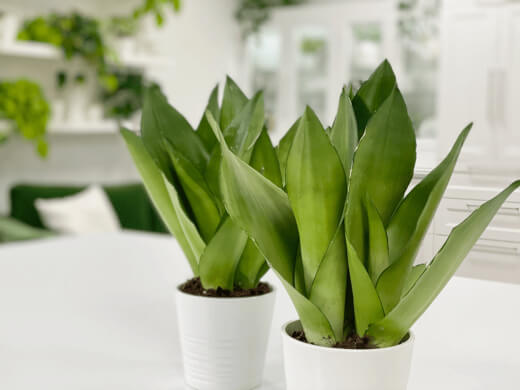
Source: nouveauraw.com
Once you’ve planted your snake plant, and chosen the perfect spot, you won’t need to worry too much about general care. Just remember to water and feed your snake plant occasionally.
Watering Moonshine Snake Plant
- As with most succulents, watering too frequently can cause some issues like root rot.
- Watering every other day should do the trick. When in doubt, check your soil. Soil should have plenty of time to dry out between watering.
- Cut back even more if conditions are particularly wet and humid.
- Misting your moonshine plant is not advised.
Fertilising Moonshine Snake Plant
- Over-feeding again can cause issues with your plant.
- Although it won’t really need it, you can choose to add a bit of general purpose plant food to your soil once every two years.
Other Quick Care Considerations
Beyond watering and feeding, your moonshine snake plant will live relatively care free. However, you may want to consider pruning back any yellowing leaves. Should you notice most of your leaves yellowing, your moonshine plant may have a root rot issue.
If you notice your moonshine plant to begin to look a little sad or have droopy, yellow you may want to consider re-potting to give your plant a bit of a refresh.
You may notice some superficial scarring on your moonshine plant leaves, you won’t need to worry , though, scarring is natural.
Particular Moonshine Snake Plant Problems
Few indoor plants will have issues with pests and diseases as they are far more sheltered from the elements. Should you come across the odd mealybug or spider mites, be sure to treat it with a natural insecticide.
Although a common plant, there is the issue of toxicity when it comes to the moonshine snake plant. When ingested, the snake plant can become mildly toxic to humans and animals. As such, it’s advised to keep this cultivar out of reach of children and nosy house pets.
General care and interactions with the plant are completely harmless, and the plant needs to be ingested in order to be toxic. If ingested, seek out the care of a medical expert.
Sansevieria ‘Moonshine’ Frequently Asked Questions
How do you take care of Sansevieria ‘Moonshine’?
Provide your plant with bright indirect light, use quality succulent soil that is well-draining, only water when the soil has dried out about every 4 to 6 weeks and keep the temperatures between 13 and 29°C.
How big does Sansevieria ‘Moonshine’ get?
This slow-growing cultivar typically reaches a mature height of between 30 centimetres and 1.2 metres. The container size and growing conditions will impact its growth overall.
How much light does a moonshine sansevieria need?
Indoor-grown plants need bright but indirect light like some morning sun. However, these plants can withstand full sun and low light conditions as well. Growth will not be as optimal in these conditions but the plant will still grow.
How long do sansevieria plants live?
The average lifespan of a snake plant is around 5 to 10 years. However, some varieties can live for 25 years or more.
Does Sansevieria ‘Moonshine’ bloom?
In cultivation, flowers are considered rare but blooms can appear in summer or autumn in very specific situations. When the flowers appear, they are greenish-white in colour and sweetly scented.
Do snake plants like bigger pots?
Lower-growing varieties will do fine in smaller pots but the taller species and varieties will need larger pots as they grow.
Should I wipe my snake plant leaves?
Cleaning and wiping the leaves of your snake plant will help to reveal an attractive shine and also help the plant soak in more light.
Why is my moonshine snake plant turning yellow?
There could be many reasons for this. The most common causes are watering stress, root rot, too much direct light and nutrient deficiencies.
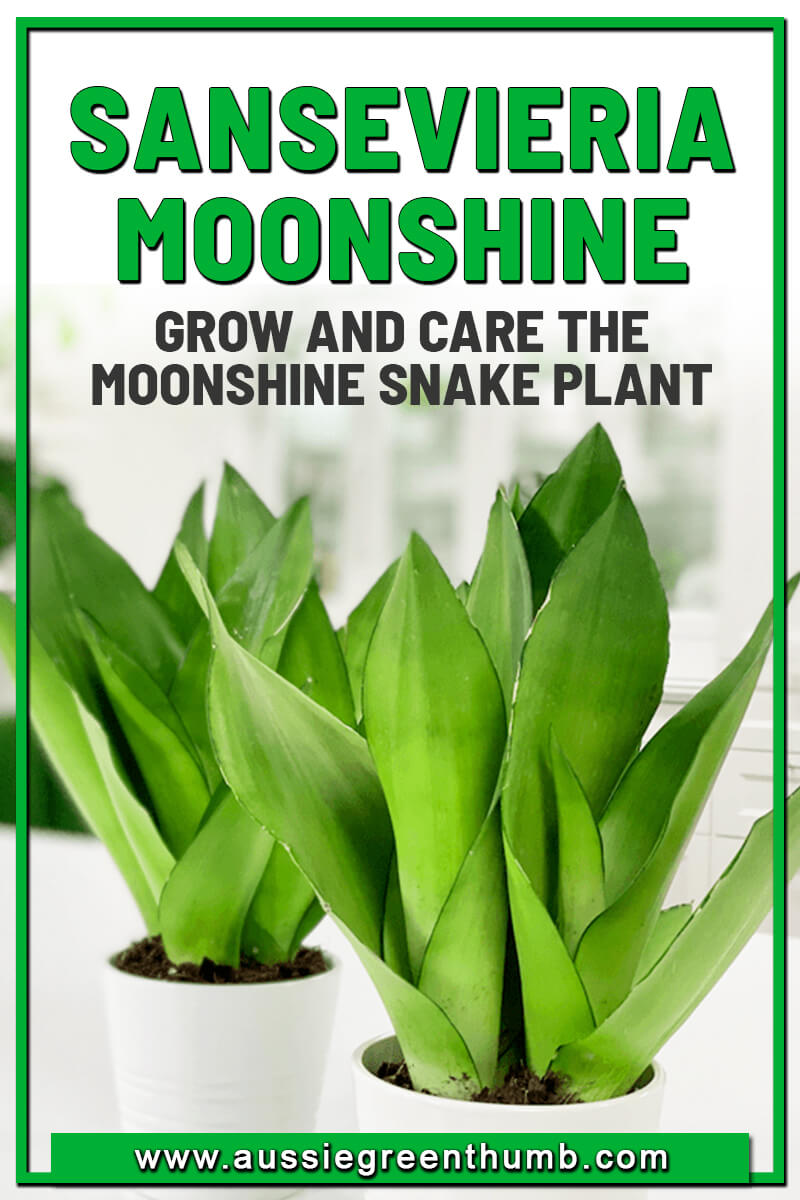
Wrapping Up Our Sansevieria ‘Moonshine’ Guide
So, there you have it. Everything you need to know to propagate and grow plenty of pretty little moonshine snake plants. Add some aesthetic and improve the breathing air in your home, office or even in your garden.
Wherever you wish to plant your Sansevieria ‘Moonshine’ plant, ensure you’ve given it plenty of well-draining soil and that you give it the occasional water. Otherwise, just enjoy the new addition to your home.
Published on January 4, 2023 by Gary Clarke
Last Updated on February 25, 2024


